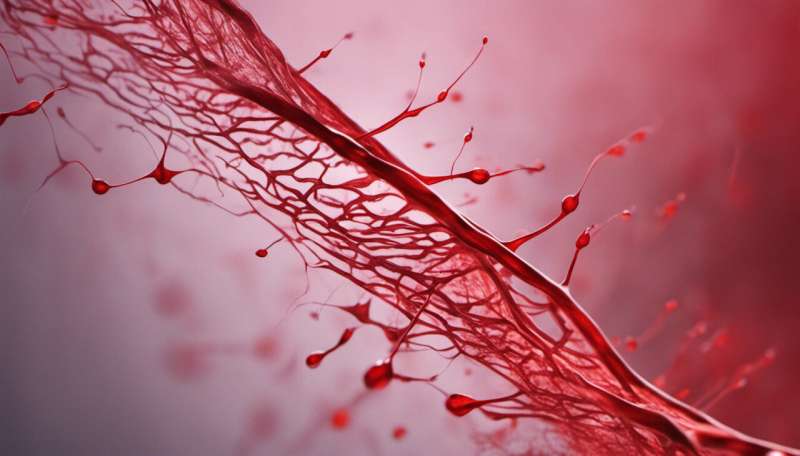
Blood vessels can be injured by the build-up of atherosclerosis and long-standing hypertension, among other conditions. As a consequence, blood vessels may undergo a process called remodeling, whereby their walls thicken and cause blockages (known as occlusion). In a new study, researchers from the University of Tsukuba discovered how cells marked by platelet-derived growth factor receptor alpha (PDGFRa+) residing predominantly in the most outer layer of blood vessels contribute to their remodeling.
Blood vessels comprise three layers, each of which fulfills a unique role in the function and stability of blood vessels: The innermost layer (the intima) is lined with endothelial cells that regulate the exchange between the blood and tissues; the medial layer (the media) consists of smooth muscle cells that regulate the tone of the blood vessel; and the outermost layer (the adventitia) contains various cell types and connective tissue to provide structural integrity and stability to the blood vessels. The intima is highly sensitive to pathologic conditions, such as atherosclerosis and hypertension, but also vascular occlusion due to stent implantation (also called in-stent restenosis). When the intima is damaged, the blood vessel undergoes remodeling, whereby smooth muscle cells in the media multiply and result in the blocking of the vessel wall. While adventitial cells are also known to contribute to this process, how and to what extent they do so remains unknown.
“Neointima formation is a major complication of vascular disorders and stent implantations,” says lead author of the study Assistant Professor Kenichi Kimura. “Because they contribute to the overall morbidity and mortality of patients, it’s important to understand the mechanism leading to neointima formation, so we can provide a therapeutic approach to patients. The role of the media in neointima formation has been heavily studied in the past. Therefore, in this study we wanted to understand how adventitial cells may contribute to it.”
To achieve their goal, the researchers used lineage tracing and marked PDGFRa+ cells of mice with a fluorescent protein. By doing so, they were able to identify and track cell populations and their progeny over time. To understand how PDGFRa+ cells contribute to neointima formation, the researchers applied three different types of injury to blood vessels of mice: Carotid artery ligation (tying off the major blood vessel in the neck), denudation (using a wire to injure the blood vessel from within) and pressure overload (tying off the aorta to increase the blood pressure in the vessels arising from the aorta).
Source: Read Full Article
